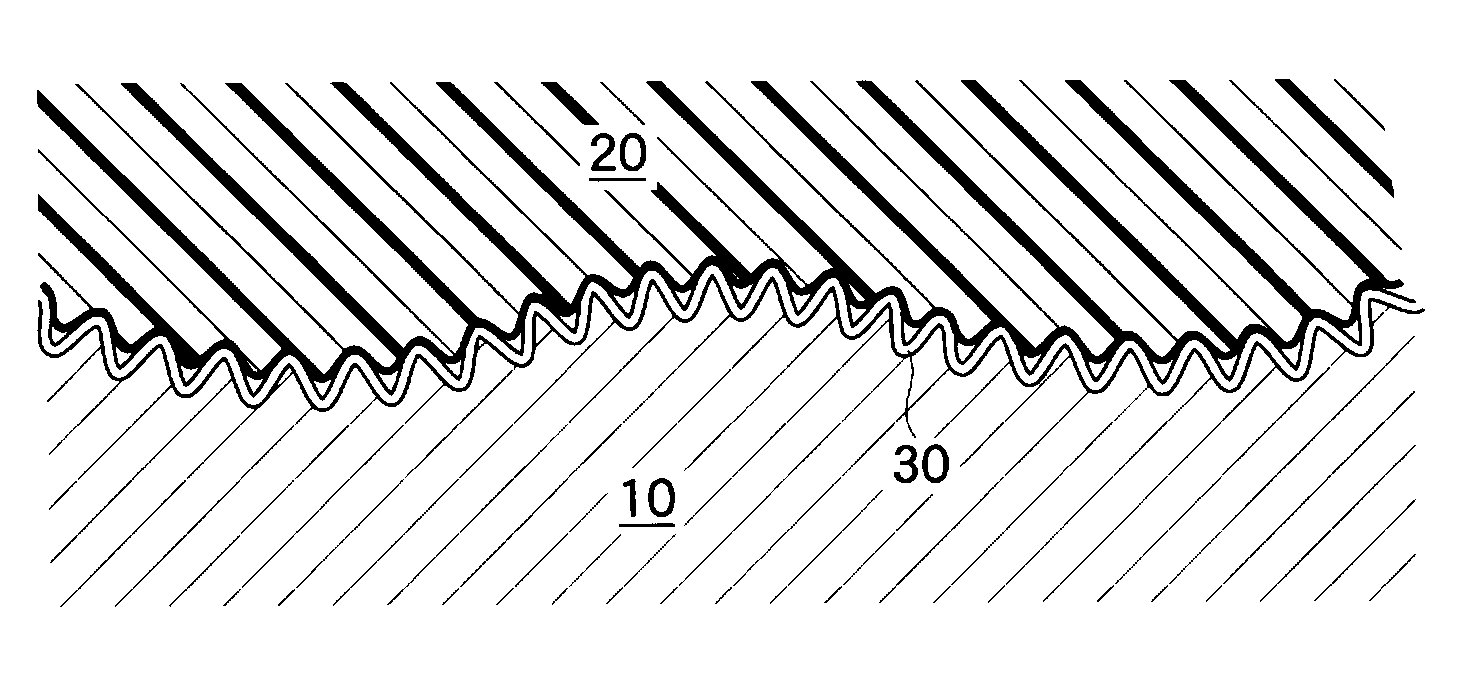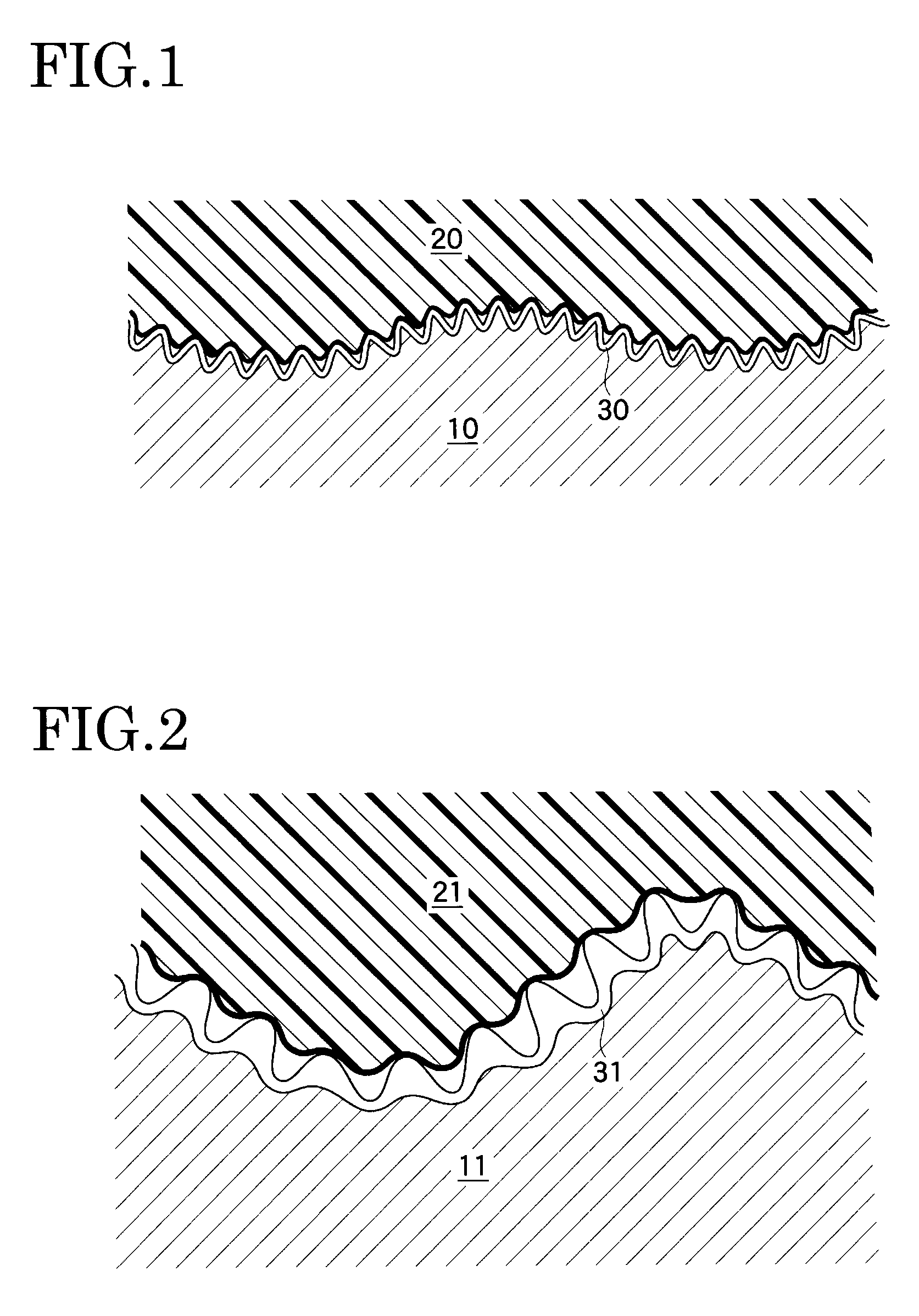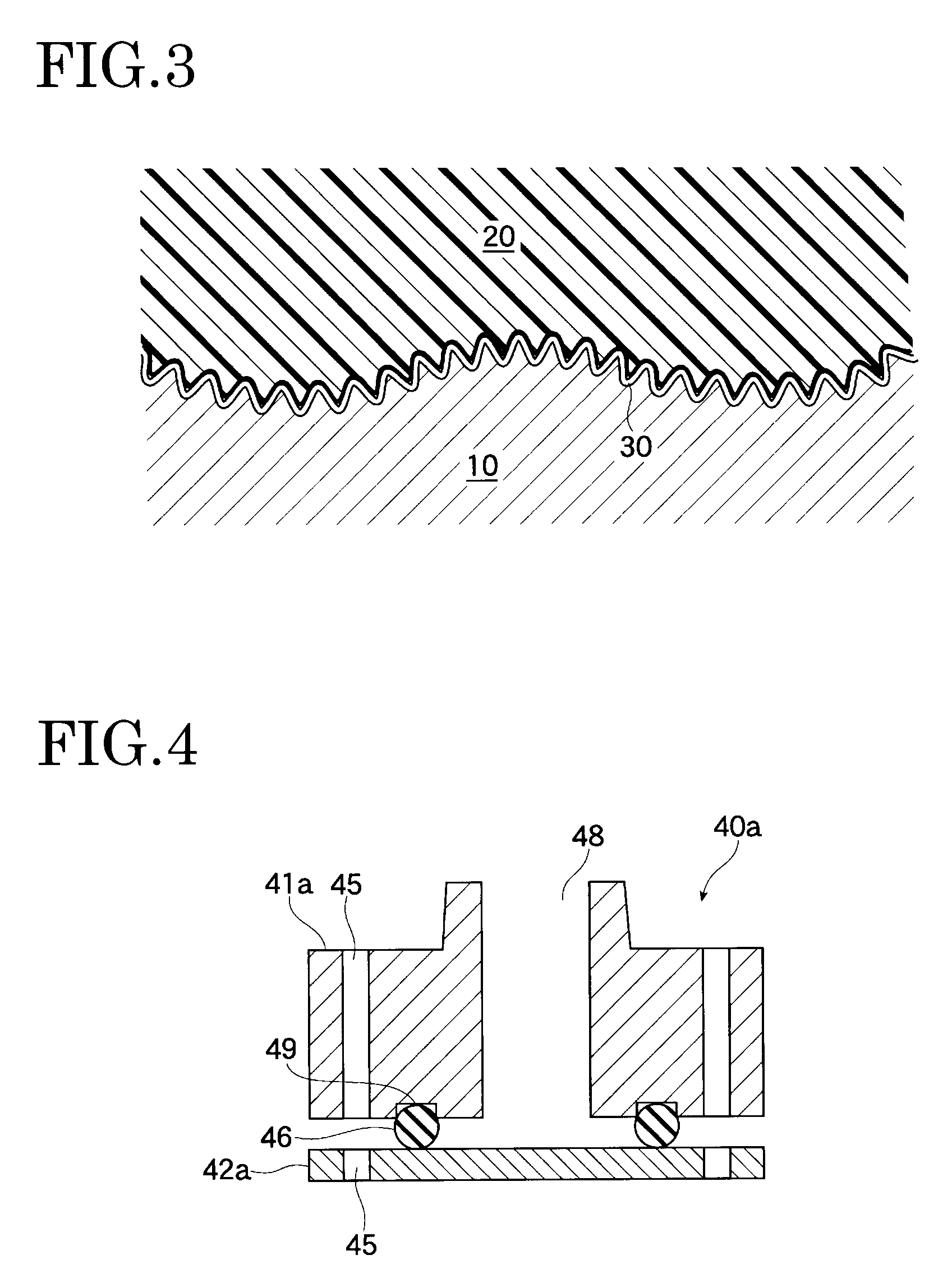Metal-resin complex and process for production thereof
a metal-resin complex and complex technology, applied in the field of metal-resin composites, can solve the problems of degrading battery performance and battery life, metal alloy parts and molded resins, and unsure whether superior gas sealing properties are exerted or not, and achieve excellent gas sealing properties, not easily separated from each other, and better gas sealing properties
- Summary
- Abstract
- Description
- Claims
- Application Information
AI Technical Summary
Benefits of technology
Problems solved by technology
Method used
Image
Examples
experimental examples
[0083]Hereinafter, a measuring method of gas sealing properties by the NMT, new NMT or MNT of the present invention will be described with reference to experimental examples. The following equipment was used for the experiments.
(1) Electron Microscopic Observation
[0084]An electron microscope was mainly used for observation of aluminum alloy surfaces. This electron microscope was a scanning electron microscope (SEM) “JSM-6700F (JEOL Ltd.)”, and operated at 1 to 2 kV for the observation.
(2) X-Ray Photoelectron Spectroscopy (XPS Observation)
[0085]An X-ray photoelectron spectroscopic analyzer (XPS observation) was used, where a sample is irradiated with X-ray and the energy of photoelectrons that are emitted from the sample is analyzed to perform qualitative analysis of elements and the like. Qualitative analysis by XPS was conducted with respect to nitrogen atoms on aluminum alloys, and presence of chemically adsorbed hydrazine was confirmed. An XPS “AXIS-Nova (Kratos Analytical Ltd., ...
experimental example 1
Preparation of A5052 Aluminum Alloy Parts (NMT 2)
[0088]To prepare the structure 40d shown in FIG. 5, A5052 aluminum alloy parts of the body 41d, bottom 42d and metal ring 43d were prepared. The body 41d was treated with the surface treatment of the NMT 2. In contrast, the bottom 42d and metal ring 43d were treated with the surface treatment of the NMT. The surface treatment of the NMT 2 was performed as follows. First, aqueous solution (solution temperature of 60° C.) containing 7.5% of an aluminum degreasing agent “NE-6 (Meltex Inc.)” was prepared as degreasing solution, and a degreasing bath with the degreasing solution was prepared. The A5052 aluminum alloy part (a shaped part to be the body 41d by the treatment) was immersed therein for 5 min, and then washed with tap water (Ota-city, Gunma). Subsequently, aqueous solution (40° C.) containing 1% hydrochloric acid was prepared in another tub, so as to prepare an acid pre-cleaning bath. The part was immersed in this acid pre-clean...
experimental example 2
Preparation of A5052 Aluminum Alloy Part (NMT)
[0092]To prepare the structure 40b shown in FIG. 5, A5052 aluminum alloy parts of the body 41b, bottom 42b and metal ring 43b were prepared. The body 41b, bottom 42b and metal ring 43b were treated with the surface treatment of the NMT. The surface treatment of the NMT was performed as follows. First, aqueous solution (solution temperature of 60° C.) containing 7.5% of the aluminum degreasing agent “NE-6” was prepared as degreasing solution, and a degreasing bath with the degreasing solution was prepared. The A5052 aluminum alloy parts (shaped parts to be the body 41b, bottom 42b and metal ring 43b by the treatment) were immersed therein for 5 min, and then washed with tap water (Ota-city, Gunma). Subsequently, aqueous solution (40° C.) containing 1% hydrochloric acid was prepared in another tub, so as to prepare an acid pre-cleaning bath. The parts were immersed in this acid pre-cleaning bath for 1 min, and then washed with ion exchange...
PUM
| Property | Measurement | Unit |
|---|---|---|
| diameter | aaaaa | aaaaa |
| thickness | aaaaa | aaaaa |
| pressure | aaaaa | aaaaa |
Abstract
Description
Claims
Application Information
 Login to View More
Login to View More - R&D
- Intellectual Property
- Life Sciences
- Materials
- Tech Scout
- Unparalleled Data Quality
- Higher Quality Content
- 60% Fewer Hallucinations
Browse by: Latest US Patents, China's latest patents, Technical Efficacy Thesaurus, Application Domain, Technology Topic, Popular Technical Reports.
© 2025 PatSnap. All rights reserved.Legal|Privacy policy|Modern Slavery Act Transparency Statement|Sitemap|About US| Contact US: help@patsnap.com



